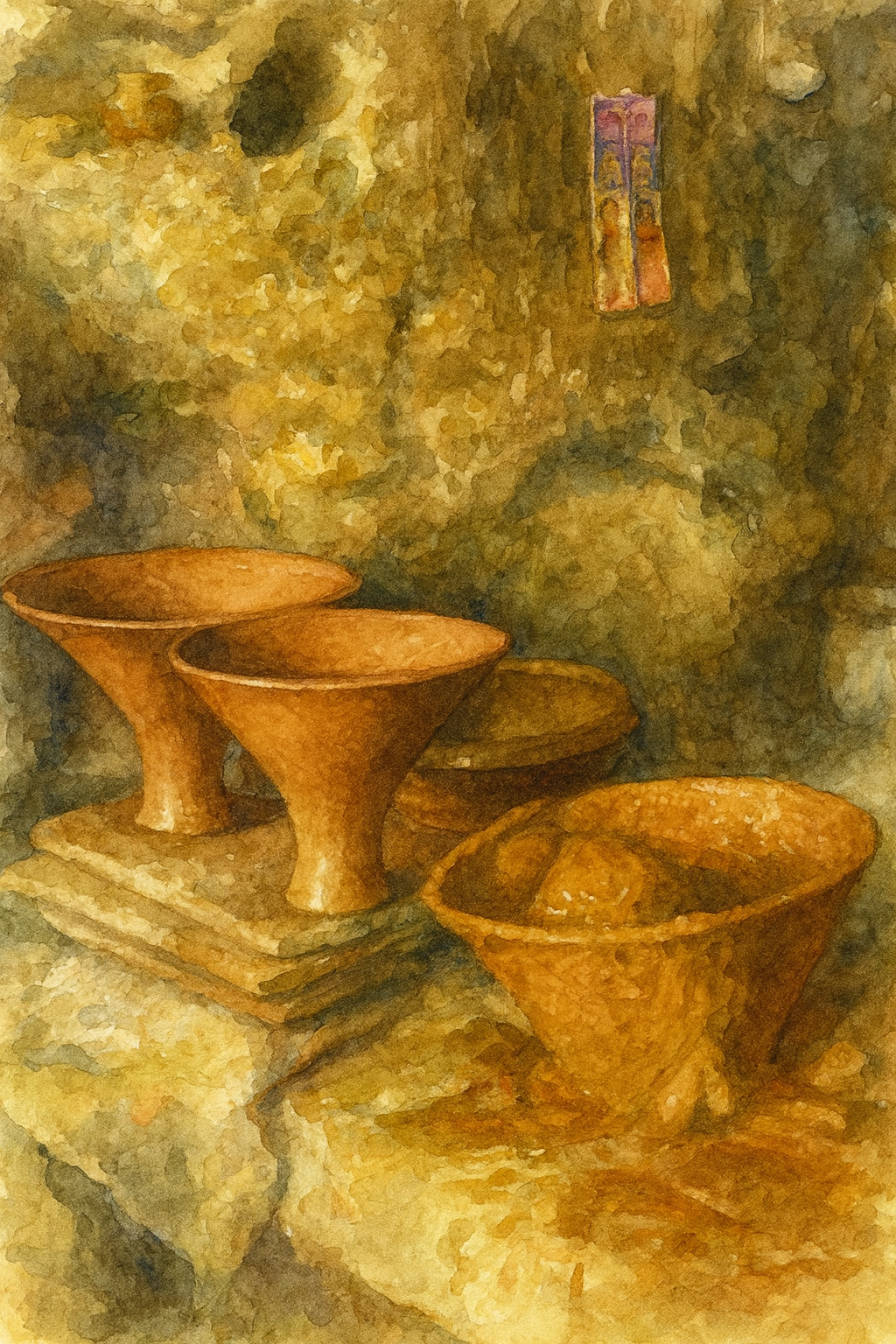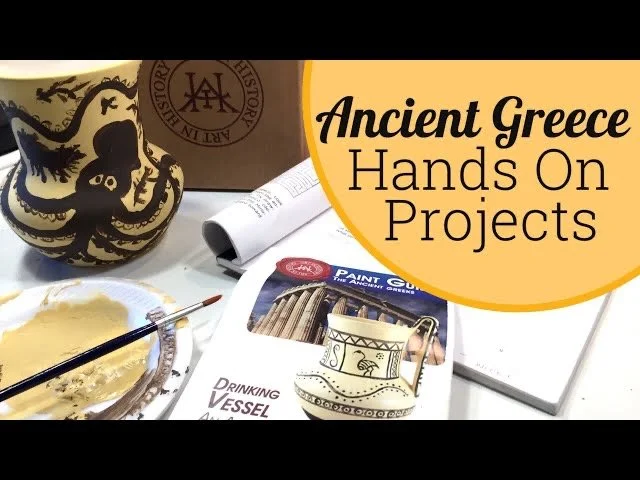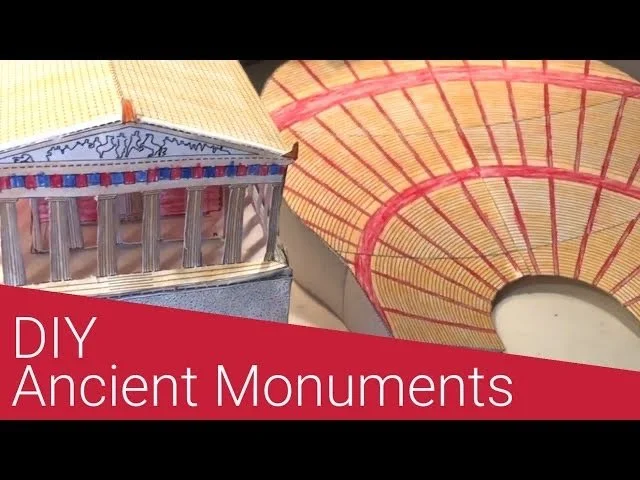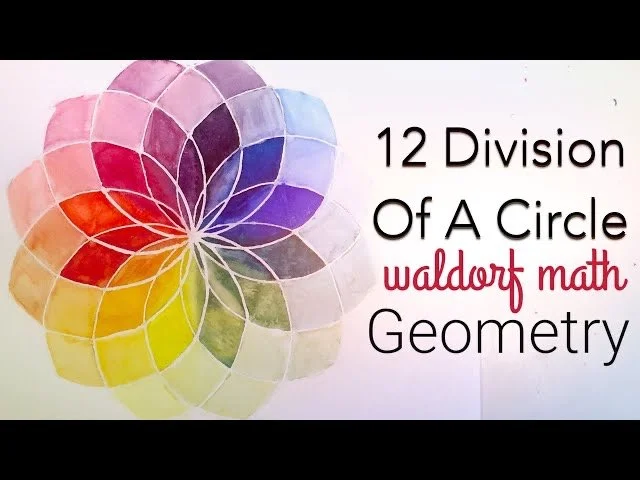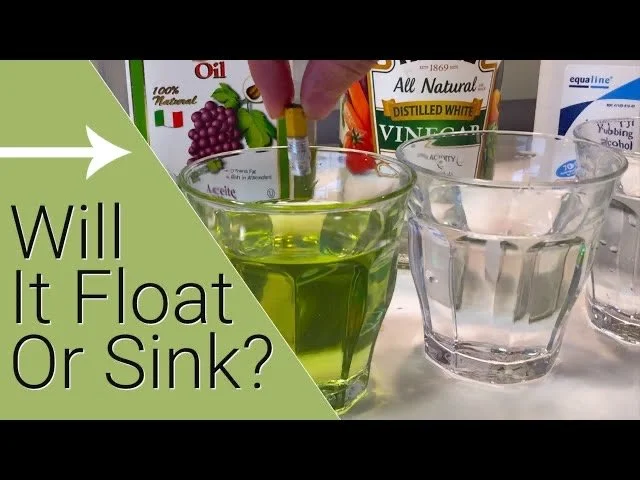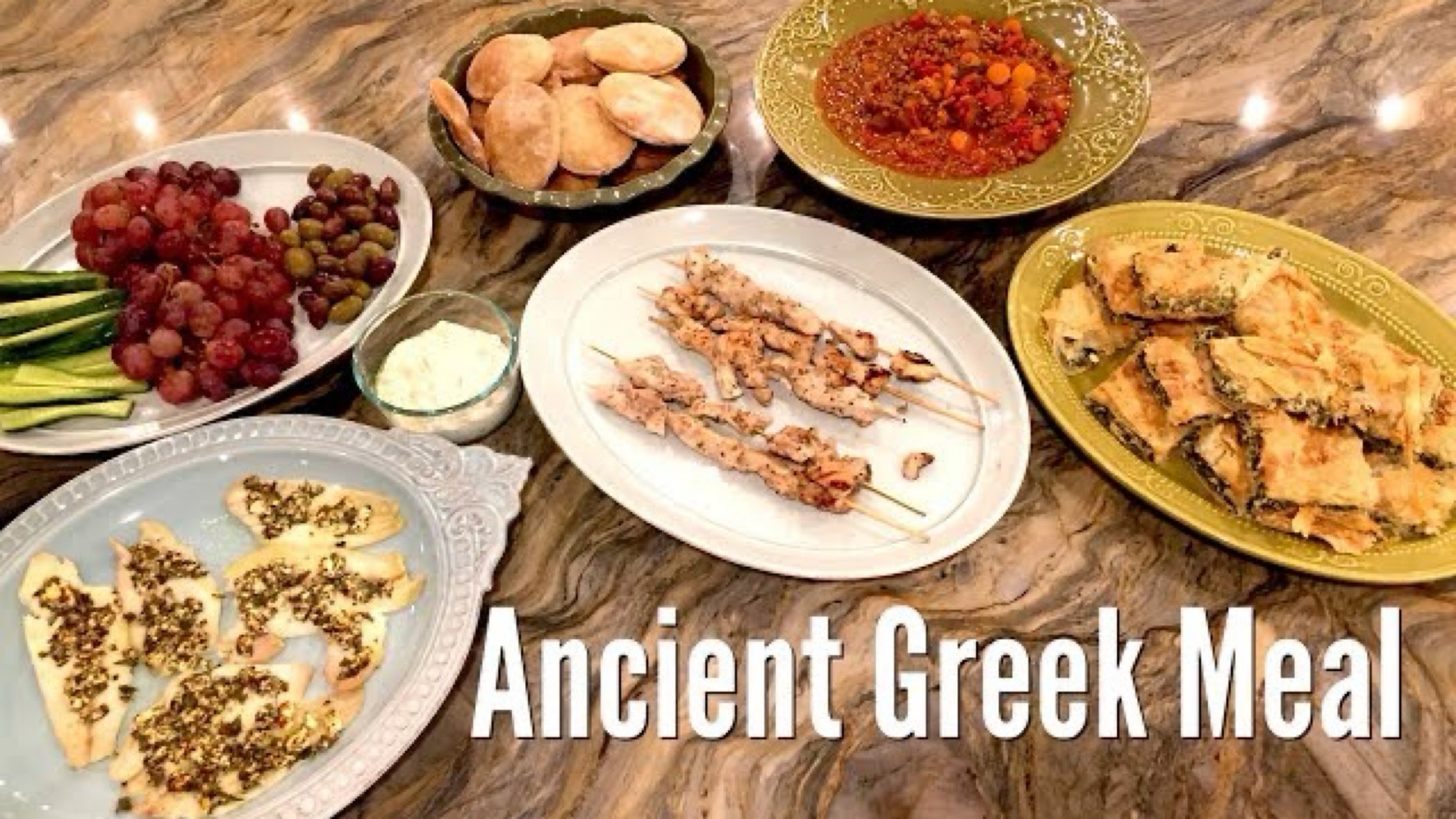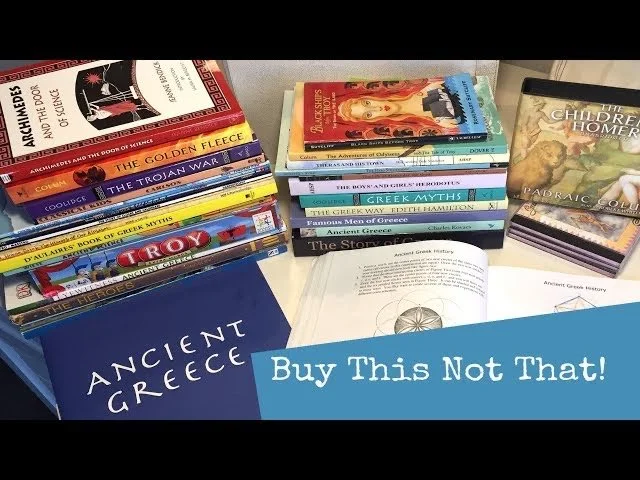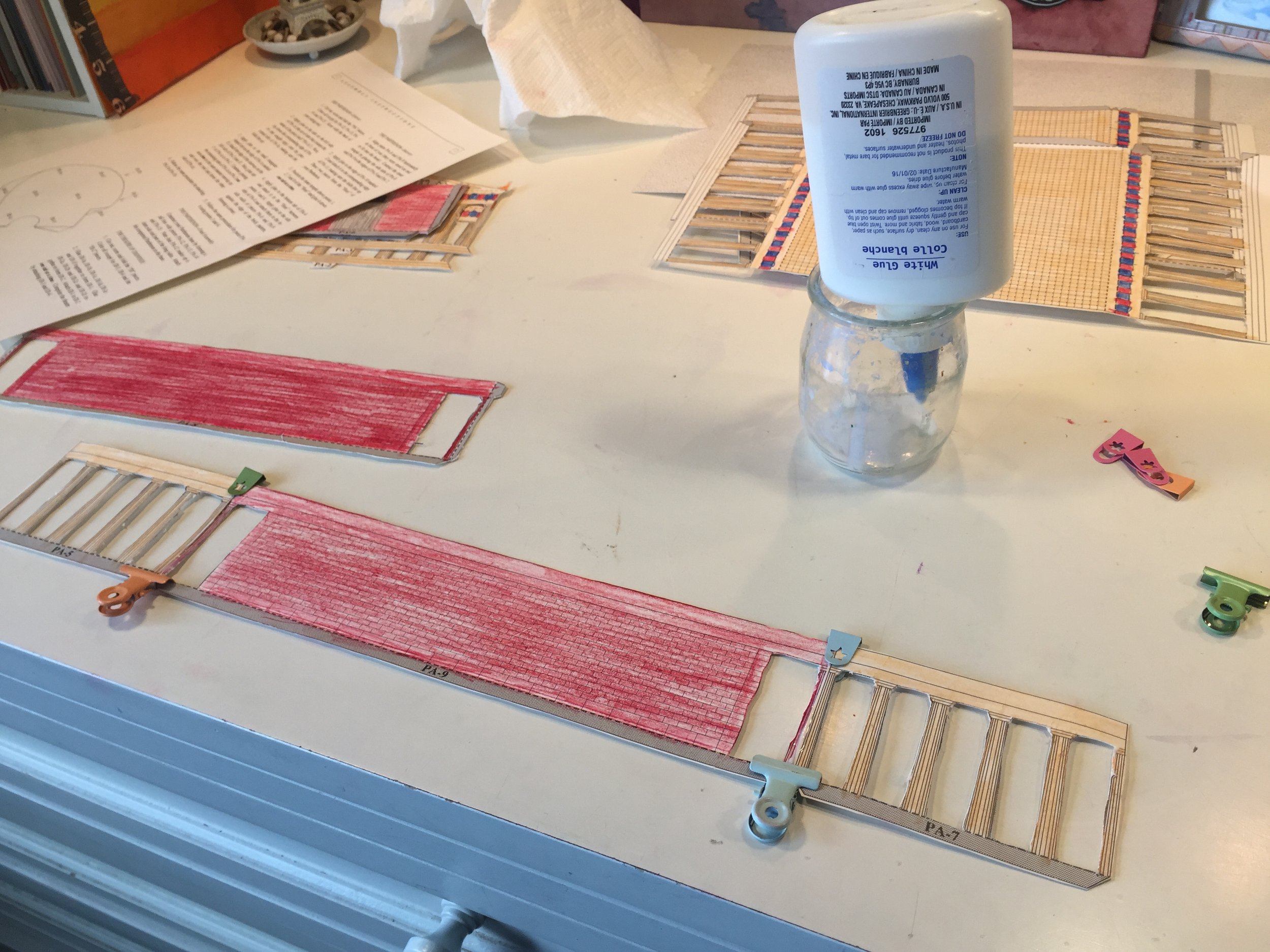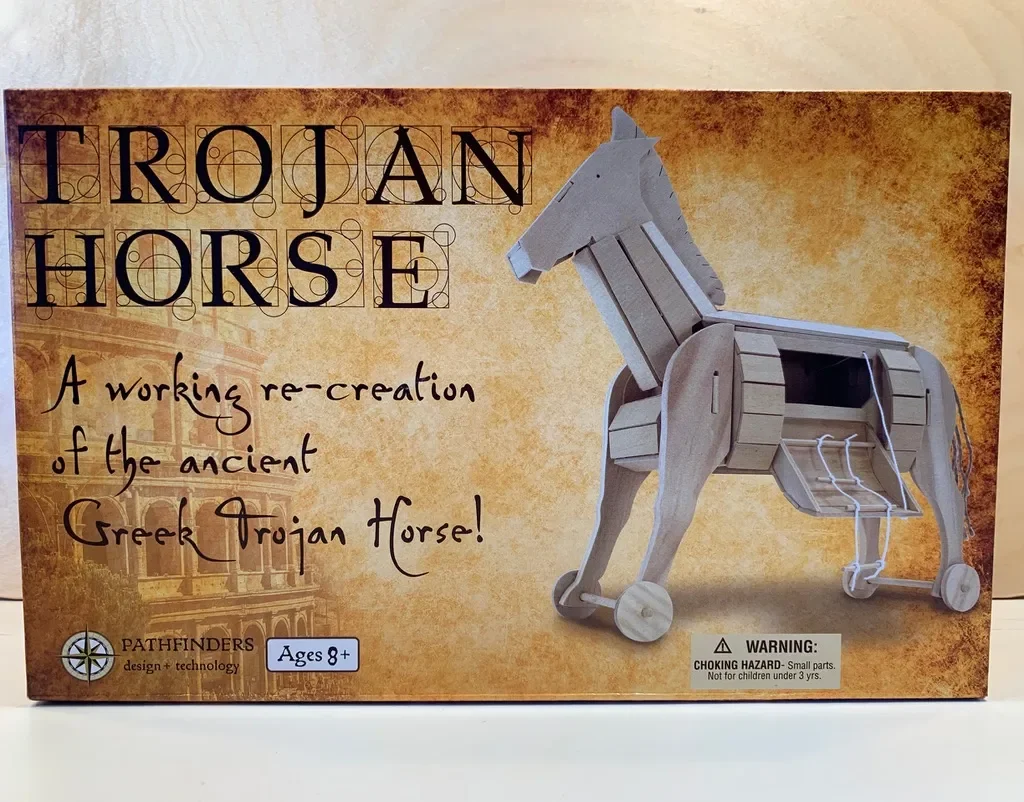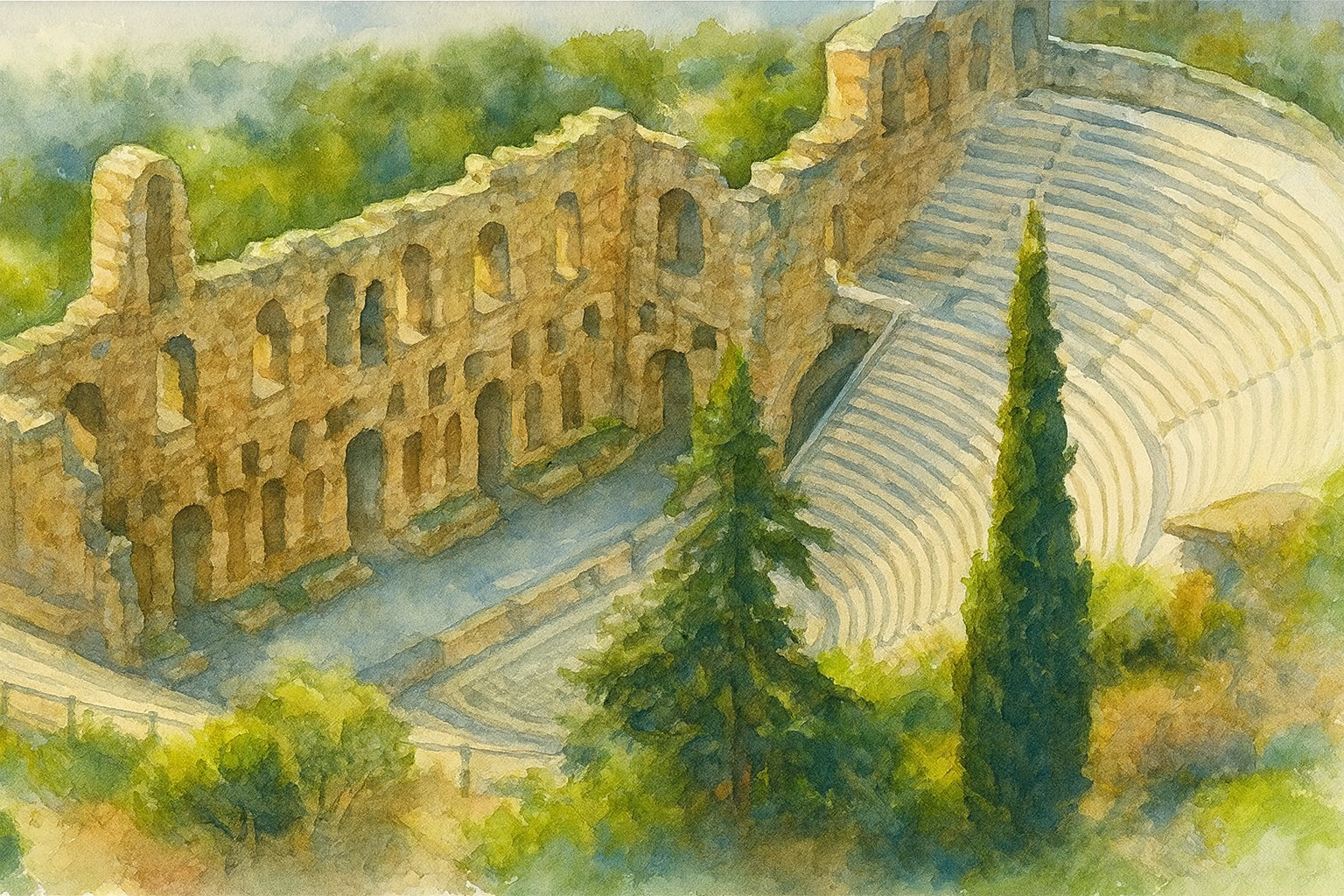
Ancient Greece
Ancient Greece
In Grade 5, the ancient civilizations are taught in several main lesson blocks covering Ancient India, Ancient Persia, Ancient Mesopotamia, Ancient China and culminating with Ancient Greece. Ancient Greece is a central theme to the Grade 5 curriculum.
As the Grade 5 student aged 10 to 12 years old is in their “Golden Age” of childhood having overcome the challenges of the Nine-Year-Change and have yet to experience the challenges of puberty, these children are seen as being in beautiful harmony between the imaginative wonder of childhood and the analytical thinking that develops more strongly after puberty. This is also a time when children are physically balanced. They haven’t yet experienced the growth spurts that accompany puberty when their limbs become elongated quickly, causing clumsiness and discoordination.
The Grade 5 student experiences this beautiful calm harmony that is mirrored in the lessons of Ancient Greece and stories of the gods and goddesses, The perfection of geometry, as seen in the division of a circle, the reflection of geometry in the botanical world, as well as in the cosmos. These lessons in astronomy, botany, geometry, and Ancient Greece are not only attractive to the Grade 5 student, but support their spiritual, mental, emotional and physical development.
The Greece main lesson block comes after the ancient civilization main lesson blocks of Grade 5. With the introduction of Ancient Greece, students will hear the myths of the Greek gods and goddesses, the Olympians heroes such as Hercules, Perseus and Theseus and the epic tale of the Iliad and the Odyssey. These lessons mix myth and history, yet connect the students to moral struggles, courage, destiny, and human fallibility.
Following these stories, lessons on the Persian wars, the rise of Athens, Sparta and the beginnings of democracy are introduced in story form. The Ancient Greece main lesson block is a wonderful opportunity for students to dramatize or retell famous moments, like the Battle of Marathon. In the study of architecture, sculpture, drama, and philosophy, students are exposed to beauty, perfection and the grace of Ancient Greek culture.
The artistic representation of the Ancient Greek lessons are in sharp contrast with those presented in Ancient India. Whereas in the Ancient India main lesson block, watercoloring was a suitable art medium to represent the reverence and dreamlike imagery of the lessons, Ancient Greek artistry is based on geometric forms and architecture. This is an opportunity for students to practice precision in their illustrations.
Poetry and recitations are emphasized during this main lesson block. A highlight of the Grade 5 year are the Olympics. Children from multiple Waldorf schools or co-ops gather together to participate in a one day pentathlon. Students compete in events like running, javelin, discus, long jump, and wrestling. The events are conducted with reverence, grace and fairness, reflecting the Greek ideal of harmony between physical strength and moral character.
Whereas previous history main lesson blocks focused on spiritual reverence rather than analytical reflections of recorded history, Ancient Greece shows the transition from mythical consciousness to the beginning of historical thought and rational philosophy. Students see how human beings began to seek truth, beauty, and justice in a conscious way. This main lesson block helps foster an appreciation for beauty, and a respect for balance and harmony in life, and aspiration for moral conduct. These themes are reflected in the students’ development.
Ancient Greece Resources & Projects
-
How to do a Unit Study | Ancient Greece
It's time to put together another unit and this time it's Ancient Greece. We already started out with materials for this unit, but over the last few years, we added more resources. It's quite a full unit now, and it doesn't look like we'll be able to cover everything we want in four short weeks.
-
Ancient Greece Drinking Vessel
Collaborative hands-on projects are great for home or classroom education. Art in History produces a variety of pottery pieces for various time periods. The Drinking Vessel would work for a unit on the Ancient Civilizations of Rome or Greece.
-
How to Make a Water Clock
Making a water clock is an easy science project you can do with supplies you have around the house. It's educational and a great hands on project. This project was done to accompany our Ancient Greece Main Lesson Block. We used the book by Jim Wiese called Ancient Science as inspiration for our science projects for our ancient civilizations units.
-
Building the Parthenon at the Acropolis & Theater of Dionysus
Building a replica of the Parthenon and the Theater of Dionysus of the Acropolis was time consuming and not something I would schedule again any time soon; however, it would not have been possible without Ancient Greek Monuments by Steven Savage
-
12 Division of a Circle | Waldorf Geometry
Math is beautiful and arguably the most beautiful math is geometry. Geometric designs are all around us, and when we pause and recognize them, their mysteries are revealed. This lesson, the 12 division of a circle, is one such project. When a circle is divided into 12 sections with circles of the same diameter, the results are nothing short of stunning.
-
Archimedes' Experiments | Buoyancy
Fast, easy and educational science projects are the best, especially when you happen to have all the materials to do them. This lesson on buoyancy was so instructional, I'm sure my kids and I will be remembering it everytime we dip into a swimming pool. I love it when a homeschool lesson is an opportunity for me to learn something new.
-
Ancient Greek Meal
What better way to learn about a time period in history than to eat your way through it! That's just what we did during our Ancient Greece main lesson block. With the help of Food and Cooking in Ancient Greece by Clive Gifford, we baked, cooked and grilled an authentic and tasty Ancient Greek meal. We did take a couple liberties when ingredients couldn't be sourced.
-
How To Build A Trojan Horse | Ancient Greece
We love our hands-on project and this one fits perfectly for our Ancient Greece unit as well as our horse unit. This project was for my 13-year-old son who was able to assemble it on his own. Though it should take about 2 hours, with drying time and breaks, it took us a couple weeks to complete.
-
Ancient Greece Review
Unit studies can be so much fun to put together, but I face one problem every. single. time. I plan too much. I get overly excited. I get too many resources. While I struggle to learn how much is just right, come along and I'll show you what works, what didn't work and what we'll save for later.

Ancient Greece
How to do a Unit Study | Ancient Greece
It's time to put together another unit and this time it's Ancient Greece. We already started out with materials for this unit, but over the last few years, we added more resources. It's quite a full unit now, and it doesn't look like we'll be able to cover everything we want in four short weeks. We could make this unit longer by 2-3 weeks and cover everything more easily, but as we got a late start to the school year, we are trying to be very efficient with our units so we can squeeze all our history units into winter. Granted our southern California winters are hardly cold, cloudy or dreary (perfect weather for hours of reading in front of the fireplace), instead we have gorgeous pleasant need-to-be-outdoor weather! You see, I like to put our history unit in the winter when we like to cozy up and read. We might turn on the fireplace, grab some warm blankets and listen while I read aloud. History units are perfect for this because there's usually a lot of reading. And while we've had a small share of cool days, it feels nothing like winter! If you have a reason behind how you organize your units during the year, I'd love to hear it!
When putting together a history unit, I look for books/resources in the following topic areas:
History (famous people, timeline history, historical events)
Biographies (picture books work great for biographies)
Geography (a single atlas book does fine)
Historical fiction (a great way to get your history/culture in a fun book)
Culture/food/clothing (cook up a dish from the time period)
Audio books/songs (music from the time period is fun to listen to)
Projects/Activities (pre-made kits are a go-to staple around here)
Games (Professor Noggins are our favorite)
Workbooks (use sparingly or skip and do narrations)
Picture books (surprisingly informative & fun)
Activity and project books (Lauri Carlson has several)
Science/math (adding other subjects rounds out your unit)
Two more things I use for lesson planning are full back Post-its sticky pads and a pencil. I write notes about each book/resource on the sticky pad and stick it on the front cover of the book for easy lesson planning.
Lesson planning has been in flux for about a year or two. Currently you can find lesson plans for this unit graciously assembled by Sayeda at Precious Years exclusively for Homeschool Panda. Follow link below to access.
While I wait for some awesome lesson plan updates at Homeschool Panda, I went ahead and created this set of lesson plans in the meantime using my Mac and Numbers:
Week 1 Ancient Greece Lesson Plans
Week 2 Ancient Greece Lesson Plans
Week 3 Ancient Greece Lesson Plans
Week 4 Ancient Greece Lesson Plans
Check out the other videos in our Ancient Greece Main Lesson Block.
Ancient Greece Drinking Vessel
Click to see the video on how we painted this replica of an ancient Greek vessel
Collaborative hands-on projects are great for home or classroom education. Art in History produces a variety of pottery pieces for various time periods. The Drinking Vessel would work for a unit on the Ancient Civilizations of Rome or Greece. My 11-year-old and 7-year-old worked together with me. I painted the octopus, while my son finished that off and added details. My 7-year-old helped painted the based color but wasn’t as interested in this project as my 11-year-old.
How to Make a Water Clock
Making a water clock is an easy science project you can do with supplies you have around the house. It’s educational and a great hands on project. This project was done to accompany our Ancient Greece Main Lesson Block. We used the book by Jim Wiese called Ancient Science as inspiration for our science projects for our ancient civilizations units.
We had mixed results. We’ve had mixed results making water clocks every time we’ve attempted this project. The basics of the science project is to have a large vessel filled with water that can drip or flow into another vessel which is calibrated and marked at intervals. We used a stopwatch to mark on a piece of electrical tape taped to the receiving vessel. After the clock was calibrated, we filled our container and let it flow into our receiving vessel. We had a discrepancy of about 2 minutes which means we have to recalibrate or water clocks don’t keep good time! Either way, we enjoyed this simple instructional ancient science project.
Building the Parthenon at the Acropolis & Theater of Dionysus
Building a replica of the Parthenon and the Theater of Dionysus of the Acropolis was time consuming and not something I would schedule again any time soon; however, it would not have been possible without Ancient Greek Monuments by Steven Savage. This book comes with a printed model of the Acropolis and Parthenon that you cut, color, fold and glue together. The paper is thick high quality paper. All you need are scissors, glue and color pencils, but an X-acto knife and metal ruler really help with the details and hard to reach places.
This project was scheduled for one week for our homeschool Ancient Greece unit, but ended up stretching over three weeks. My 11-year-old did the project in stages, and did a lot of the cutting and folding while I read to him for his lessons.
12 Division of a Circle | Waldorf Geometry
Math is beautiful and arguably the most beautiful math is geometry. Geometric designs are all around us, and when we pause and recognize them, their mysteries are revealed. This lesson, the 12 division of a circle, is one such project. When a circle is divided into 12 sections with circles of the same diameter, the results are nothing short of stunning. Once the math is complete, it’s time to color or paint in the sections, allowing magnificent designs to emerge.
Check out our complete Ancient Greece unit.
I’m using the Live Education Waldorf Curriculum for grade 6 for lesson inspiration and Josie Lewis Art for color inspiration for this project.
Art supplies are from A Child’s Dream
Stockmar watercolor paints, Paint Jars, Paint brushes are a mix of cheap synthetic fiber brushes and high quality all natural fiber brushes. I used 90lb. 14″x11″ watercolor paper by Fabriano, and Resist medium from a local craft store.
Archimedes' Experiments | Buoyancy
Fast, easy and educational science projects are the best, especially when you happen to have all the materials to do them. This lesson on buoyancy was so instructional, I’m sure my kids and I will be remembering it everytime we dip into a swimming pool. I love it when a homeschool lesson is an opportunity for me to learn something new. I already knew salt water was more buoyant than fresh water (one benefit to living near the beach), but I didn’t know mild acids like vinegar or alcohol were less buoyant than fresh water. This project was inspired by the one in the book Archimedes & the Door to Science by Jeanne Bendick. We are using this book as part of our Ancient Greece main lesson block and it was a perfect opportunity to add some science to our history lessons.
I highly recommend the books by Jeanne Bendick. They are well written and engaging. They have occasional black and white illustrations. The writing is simple, yet educational and written in a narrative format with many stories.
Ancient Greek Meal
What better way to learn about a time period in history than to eat your way through it! That’s just what we did during our Ancient Greece main lesson block. With the help of Food and Cooking in Ancient Greece by Clive Gifford, we baked, cooked and grilled an authentic and tasty Ancient Greek meal. We did take a couple liberties when ingredients couldn’t be sourced. We also made spanakopita which wasn’t in the book and though it’s a modern addition, it’s a tasty one!
All recipes except spanakopita are in the book. We made a few changes to the barley cakes. The recipe that follows is my own:
Ingredients:
1 cup Trader Joe’s multigrain pancake and baking mix
1 cup white flour
1 cup Jovial brand gluten-free flour
3 tablespoons honey
3 tablespoons butter
1/4-1/2 teaspoon salt
1/2 packet of yeast (about 1/4 of a teaspoon)
2 tablespoons of cream
up to 1 1/2 water
Combine all ingredients and mix well. No kneading necessary. Cover and let sit for 2-4 hours until dough has risen. It may not double size because of the gluten-free flour. Using warm water will speed up the process.
Once the dough has risen, turn it out onto a floured surface and roll it out to about 1/8 inch thick. Using a circle cookie cutter, cut circles and place on a tray lined with parchment paper. Bake for 9 minutes or until the puff up and turn golden at 430 degrees.
Spanakopita recipe:
16 oz thawed and drained chopped spinach
4 eggs
10 oz feta cheese
1 teaspoon dill
pepper
1 medium chopped onion
Mix ingredients together.
On a sheet tray with raised sides, lay two sheets of phyllo dough and brush olive oil, repeat three times. Lay filling and spread evening. Layer another two sets of phyllo dough. Score top and drizzle olive oil. Bake at 325 degrees for 55 minutes.
Check out the other videos in our Ancient Greece Main Lesson Block. You can also see our Ancient Roman meal, Ancient Egyptian Meal and a recent Astronomy lesson which included food. Who doesn’t like mixing food and education!
Check out our last main lesson block Astronomy unit. Find great hands-on projects by watching our Nature-Watch kit videos.
How To Build A Trojan Horse | Ancient Greece
We love our hands-on project and this one fits perfectly for our Ancient Greece unit as well as our horse unit. This project was for my 13-year-old son who was able to assemble it on his own. Though it should take about 2 hours, with drying time and breaks, it took us a couple weeks to complete. One tip is to assemble a few pieces together before glueing it just in case you’ve assembled it by mistake, or you weren’t accurate. Otherwise you’ll have to yank it apart. Another tip is to leave all the materials in their bags so it will be easier when you begin to assemble it. The coolest thing about this project is that it actually works! It wheels back and forth and opens to reveal a secret compartment to hide soldiers.
Ancient Greece Review
Unit studies can be so much fun to put together, but I face one problem every. single. time. I plan too much. I get overly excited. I get too many resources. While I struggle to learn how much is just right, come along and I’ll show you what works, what didn’t work and what we’ll save for later. Some resources are worth using again and others weren’t worth buying to begin with. We did a few projects with this unit, but not as many as other units. All the lessons and hands-on projects are in the Ancient Greece Playlist.
Check out the lessons plans for this unit:
Week 1 Ancient Greece Lesson Plans
Week 2 Ancient Greece Lesson Plans
